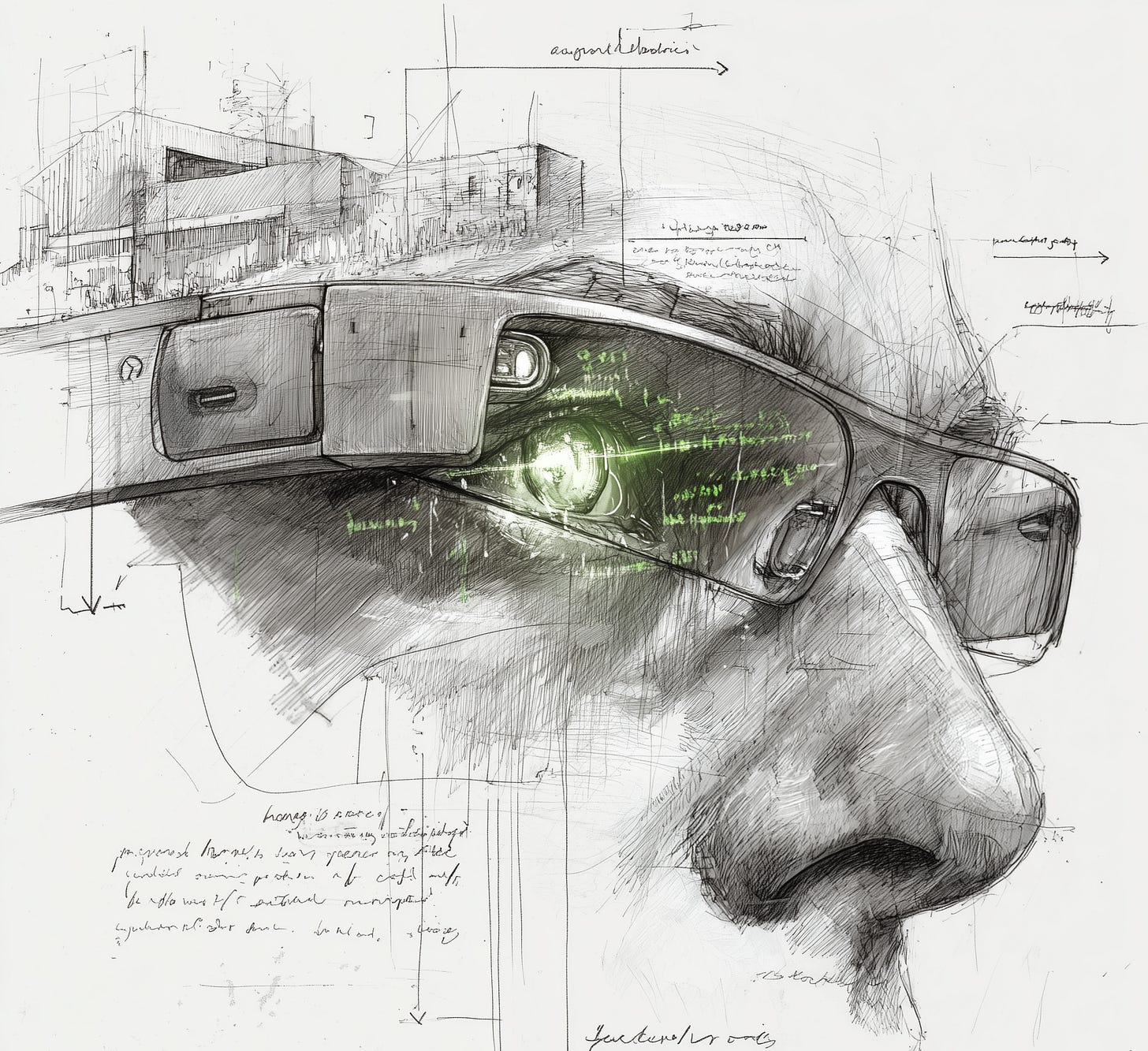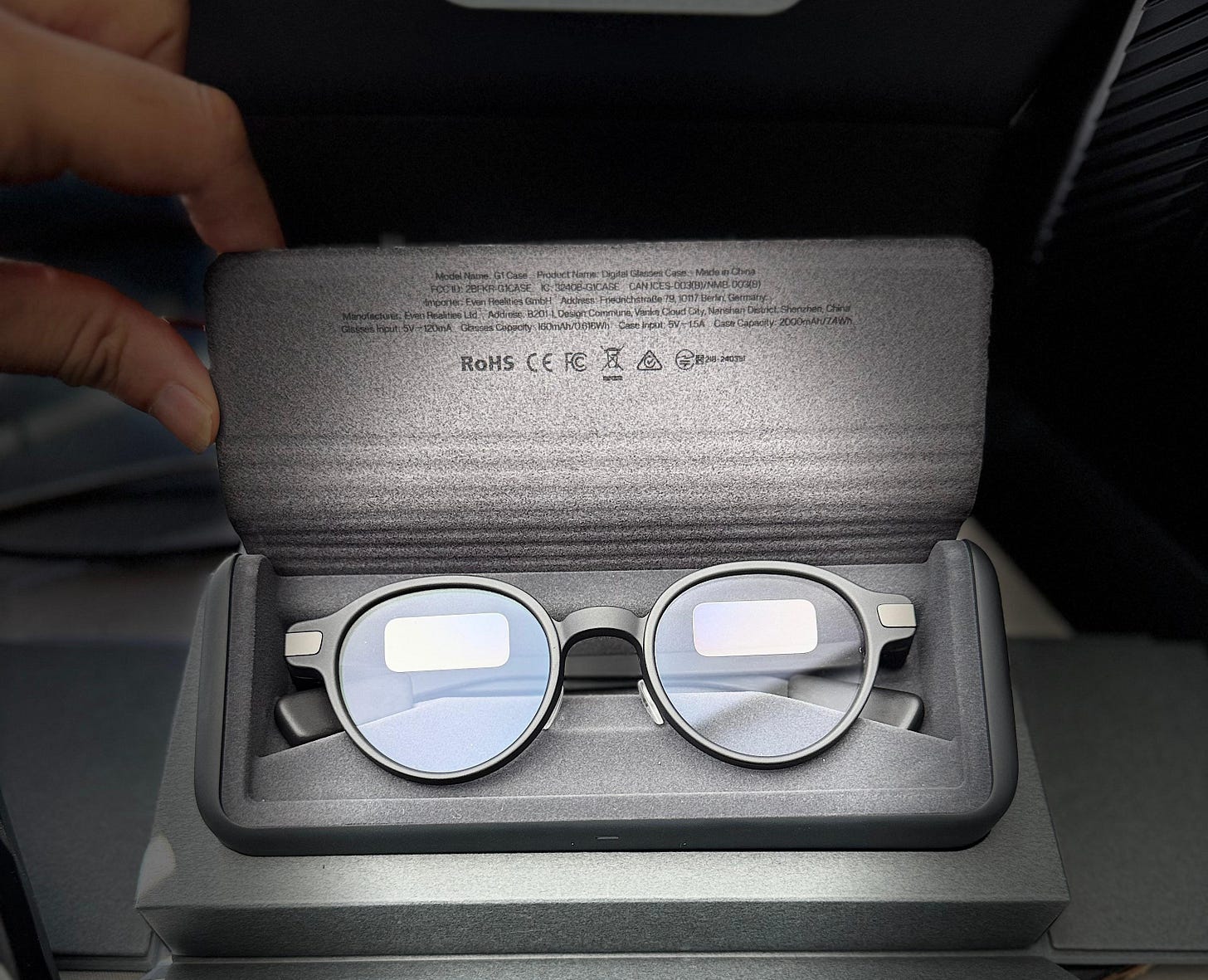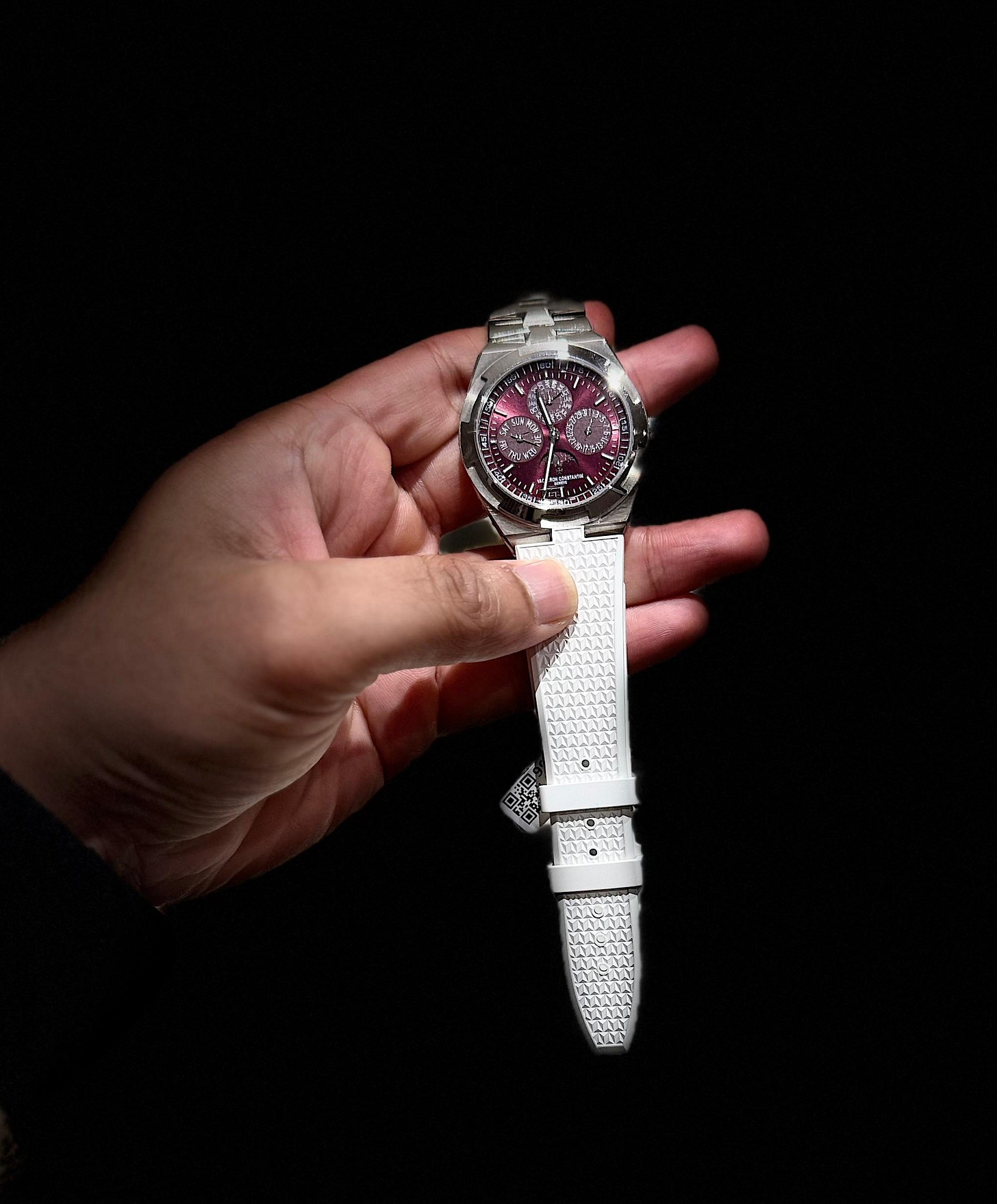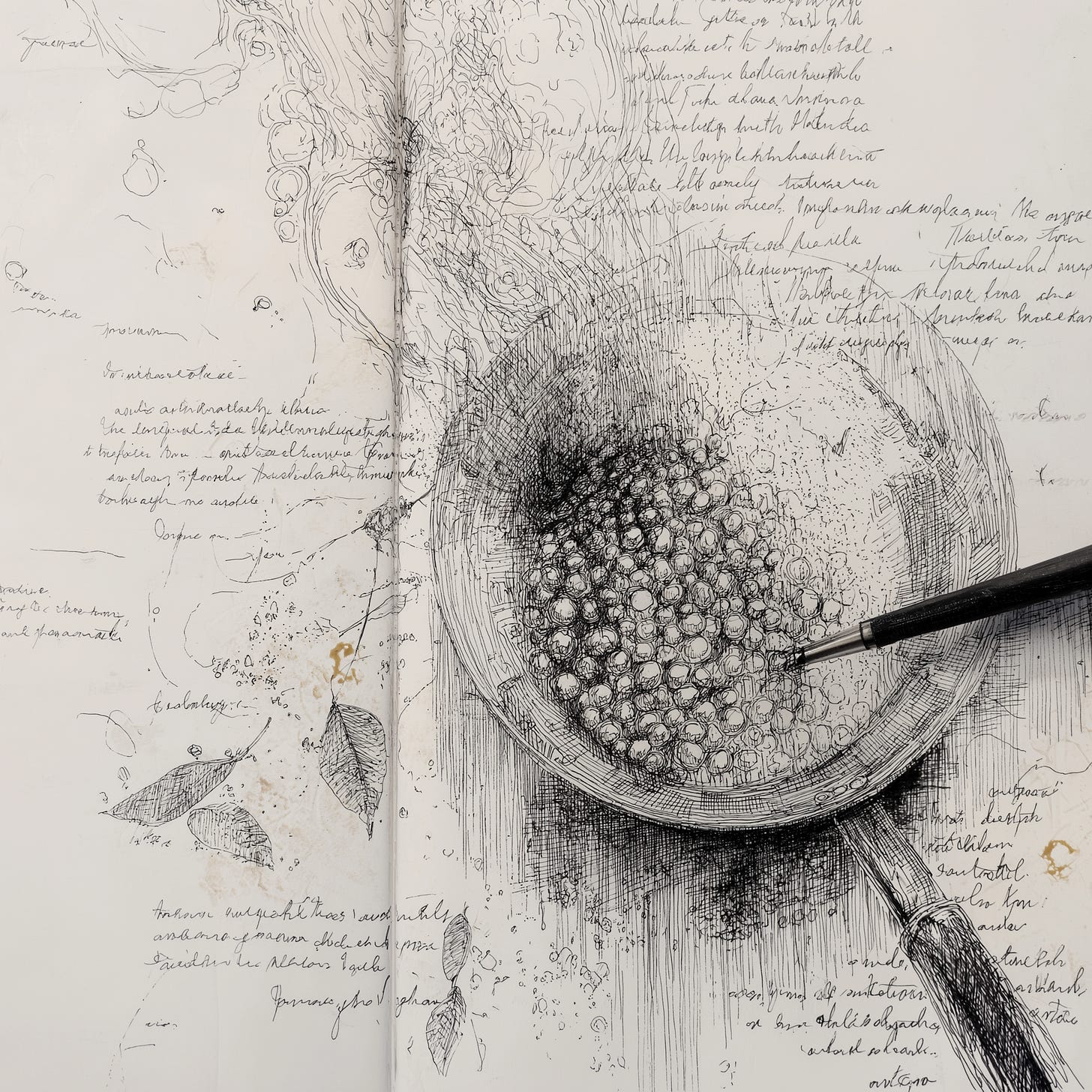🦾 Augmented #1 - Memory, On Demand
6 weeks testing a Harvard startup's AR glasses in kitchens, ateliers, stadiums, and labs
“Does this change how you listen?”
The Belgian-American specialist at Bucherer paused mid-sentence, noticing the faint green glow on my right lens. We’d been discussing Rolex’s new Land Dweller - the field-ready engineering marvel that Rolex Ambassador Roger Federer’s been wearing visibly since its 2025 launch. We were in the midst of discussing why collectors are debating its positioning between tool watch and luxury sport piece.
But then came his question.
I’d explained upfront: I was beta-testing the Halo AR glasses. With permission, they capture conversations and turn them into searchable memory - AI-structured notes, themes, and next steps.
He was curious, not concerned. We talked tech for ten minutes before returning to watches. But his question lingered: does this change how you listen?
After six weeks wearing Halo across radically different contexts - from Michelin kitchens to horology salons to MIT classrooms - my answer is yes.
And not in the way I expected.
I. The Experiment: Six Contexts, One Question
I first met Anh Phu, Halo’s co-founder, in 2023 during Professor Hugh Herr’s Human 2.0 course at MIT Media Lab. Back then his team was hacking on a HoloLens-based build. By October 2025, Halo was refined: minimalist glasses with on-consent capture that routes audio to an app for LLM summaries - structured insights, action items, topic clusters.
I didn’t want a feature checklist. I wanted to understand: How does augmentation reshape listening, memory, and presence across fundamentally different human contexts?
For six weeks, I wore Halo into six worlds:
MIT’s Human Augmentation Summit (Aug 2025) — Philosophers, neuroscientists, and cyborg psychologists debating enhancement, embodiment, and “amputation”
Michelin-starred restaurants (NYC) — From conversations with Chef Regi Mathew at Chatti to Chef Vikas Khanna’s hospitality at Bungalow, to understanding Italian pasta-making techniques at 1-star Rezdora and exploring the secret menu at The Modern, MoMA
Haute Horlogerie (Sept 2025) — Vacheron Constantin’s Patrimony line and 270th anniversary Overseas; Bucherer’s flagship store’s luxury timepieces, from its extensive Rolex collection to Patek Phillipe classics
US Open (Sept 2025) — Men’s Singles Quarterfinal, testing spontaneous conversations with strangers about tennis
Two MIT courses (Fall 2025) — AI for Human Flourishing (Prof. Pattie Maes) and How to Make (Almost) Anything (Prof. Neil Gershenfeld)
MIT EECS EDS Maker Lab (Fall 2025) — Learning to fabricate circuits, 3D-scan objects, laser-cut designs
Consent: In every context, I explained the device and requested permission before recording. If anyone declined, I didn’t record.
On October 6th, I returned the prototype. Anh Phu showed me the next generation - a lighter, brighter, sharper unit.
But I kept asking through the beta test as well as beyond…
How has my attention and memory changed?
II. What Worked: Structured Sense-Making From Living Conversations
The Halo app excelled at something genuinely valuable:
converting ephemeral dialogue into structured, searchable knowledge.
At the Bucherer Flagship, as we continued our discussion of the Land-Dweller - Rolex’s first entirely new watch movement since 2012’s Sky-Dweller - the glasses kept giving me tidbits of context and explainers for anything it suspected I didn’t know.
Similarly, at the Vacheron Constantin flagship, we discussed the 270th anniversary Burgundy-Lacquered Overseas Perpetual Calendar, and the various finishings that went into making this a $120,000 timepiece.
An hour later, the transcript wasn’t just text; it was hierarchy:
Movement architecture and engineering philosophy
Functional complications and their rationale (date, depth rating, helium escape valve)
Finishing techniques (Rolex’s/Vacheron’s approach versus haute horlogerie standards)
Materials and use case (Oystersteel, ceramic bezel, field-to-formal versatility)
Market positioning (how different houses frame tool vs. dress vs. hybrid pieces)
At Chatti, Chef Regi Mathew explained Kerala’s spice-layering with his hands in motion: “Mustard first - wait for the pop - then curry leaves. Coastal terroir matters. Then dried chilies. The order matters.”
The app captured distinctions I’d otherwise lose:
Kerala’s coconut oil-based spice blooming vs. Tamil Nadu’s ghee-forward tempering
Curry leaf terroir (coastal vs. inland varieties)
Portuguese and Syrian Christian influences on technique
Toddy shop tradition: slow-cooked in clay pots
This was conversation-to-insight, creating ‘search-able’ structure from passing exchanges that I could reference weeks later.
In MIT’s How To Make (Almost) Anything course (recorded with instructor permission for note-taking), when a teaching assistant rapid-fired explanations while I was trying to solder - “Capacitors store charge, I equals C times dV/dt; inductors resist change; for 3D scanning, object selection is the name of the game. Never leave a laser cut unattended - one good pass beats three bad ones” - I couldn’t take notes.
But Halo captured the knowledge architecture that let me succeed on the second attempt.
The cognitive space freed by not worrying about capture was genuinely transformative.
III. What Augmentation Reveals About Human Knowledge
The most interesting insights came from understanding what the technology doesn’t yet capture - and why that matters.
Keep reading with a 7-day free trial
Subscribe to The Frontier State to keep reading this post and get 7 days of free access to the full post archives.







